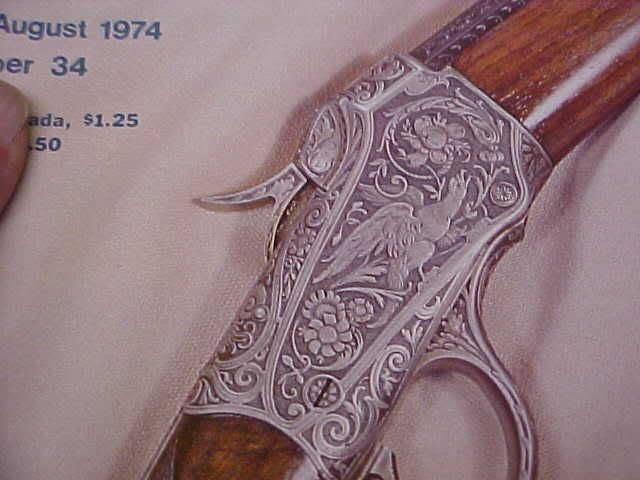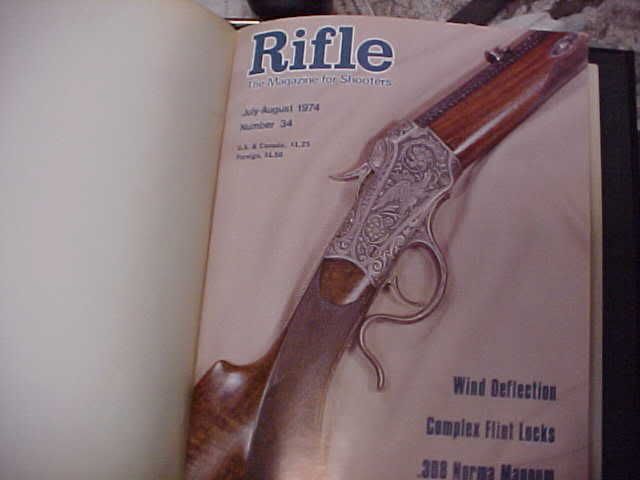|
S |
M |
T |
W |
T |
F |
S |
|
|
|
|
|
|
|
1
|
|
2
|
3
|
4
|
5
|
6
|
7
|
8
|
|
9
|
10
|
11
|
12
|
13
|
14
|
15
|
|
16
|
17
|
18
|
19
|
20
|
21
|
22
|
|
23
|
24
|
25
|
26
|
27
|
28
|
29
|
|
30
|
|
|
|
|
|
|
|
|
Forums10
Topics39,598
Posts563,272
Members14,600
| |
Most Online9,918
Jul 28th, 2025
|
|
|
|
Joined: Jan 2011
Posts: 246 Likes: 8
Sidelock
|

Sidelock
Joined: Jan 2011
Posts: 246 Likes: 8 |
The obsolete Winchester .25-20 single shot cartridge (not the still available repeater version) was not unknown in pre-WW1 Germany, where it was called 6.5x41R. It was far more popular in Austria though, where the Georg Roth ammo factory offered it. 
|
|
|
|
|
Joined: Jul 2005
Posts: 2,429 Likes: 35
Sidelock
|

Sidelock
Joined: Jul 2005
Posts: 2,429 Likes: 35 |
Very different, but I like it. Grand View, I enjoyed your take on engraving..
|
|
|
|
|
Joined: Feb 2002
Posts: 1,920 Likes: 220
Sidelock
|

Sidelock
Joined: Feb 2002
Posts: 1,920 Likes: 220 |
As has been pointed out,,take any of the old 'Masters' works and enlarge a picture of their work to this point and it reveals the jagged cuts and other horrors too.
They didn't work under sterio microscopes and other high magnification as is so common now.
No air assisted 'gravers to produce smooth cuts w/no facet chatter marks.
Magnification was always common, though some engravers did not want to outwardly admit to using any.
The style cut on the Winchester uses semi relief and modeling to produce an effect more than relying on line and/or dot shading that is most commonly seen now.
Punches of various shapes are used to push the metal into shallow relief shapes to produce shadow and light.
A followup would be to carefully polish out the shapes of the punch marks to produce a smoother finish on the vines, leaves, animal features, etc. But that wasn't done here.
Background is matted with small punches that punch a larger surface than a single dot. They are made to push down and matt at the same time a larger area. That background was probably removed in a random pattern with a single point tool. It's fast and convenient to get into the corners. In punching it down, it's leveled and matted at the same time. The punches are very tiny but work goes fast,,much faster than with a single point.
Some other styles of work are left with the randon single point background removed. Some is done with a single point cut in a parallel manner. You'll see that on Parkers and some Fox patterns.
Is it a one of a kind master piece? No I don't think so. But it's a nice looking job overall. The price?? That's up to the seller and buyer.
Other than the forend style, I like the rifle.
|
|
|
|
|
Joined: Sep 2008
Posts: 1,153
Sidelock
|

Sidelock
Joined: Sep 2008
Posts: 1,153 |
Here's the other low wall, with the same fine stockwork but a completely different engraving treatment.  The image is poor but it's easy to see that the effect is stunningly different. The anatomy, again, perhaps isn't the best but IMO it's A LOT better-looking than the Hallowell one.  Regards, Joe
You can lead a man to logic but you can't make him think. NRA Life since 1976. God bless America!
|
|
|
|
|
Joined: Nov 2008
Posts: 107
Sidelock
|

Sidelock
Joined: Nov 2008
Posts: 107 |
The anatomy, again, perhaps isn't the best but IMO it's A LOT better-looking than the Hallowell one.
The difference is the anatomy elements in the Hallowell rifle weren't designed to be "lifelike". They were designed intentionally to be elements of a scroll. The appreciation of this effect is certainly subjective, but it does require talent......and it's not as if correct anatomical recreation was attempted and not achieved. 
|
|
|
|
|
Joined: Dec 2010
Posts: 1,226 Likes: 3
Sidelock
|

Sidelock
Joined: Dec 2010
Posts: 1,226 Likes: 3 |
Many, perhaps most Germanic engravers seemed to draw their inspiration for animals and birds as much from heraldic bestiaries as from nature in the period we are discussing. The blending of fluid forms like scrolls into representations of animals that Grandview's sketch shows is very ancient; what we see here is the naturalistic ("lifelike") end of a spectrum whose other end is the Celtic and Scythian "foliate beasts". I agree that these artists weren't trying for anatomical accuracy; they had a different style in mind.
That said, some of the low-end German engraving of the '20s is really comic. I have a very useful BSW 12 guage SxS decorated on the bottom of the receiver with a duck worthy of Disney, not I think, an effect the Nazis intended. "Engraver sabotage" or just plain incompetence?
|
|
|
|
|
Joined: Dec 2006
Posts: 1,531 Likes: 20
Sidelock
|

Sidelock
Joined: Dec 2006
Posts: 1,531 Likes: 20 |
Well, having spent part of Sunday looking at British engraving patterns that included birds whose anatomy is best described as "turnip-like", I'm not sure I'd be too hard on the Germans for their engraving sins. No one does scroll like the British engravers, but much of their animal engraving makes the items under discussion here look good. Although, I hasten to add that I've seen a fair amount of German engraving where the dogs look like pigs, the deer look like pigs, the elk (red deer, I guess over there) look like pigs and the pigs look like pigs. And the ducks have bills that look like they came from a Hanna-Barbera cartoon.
|
|
|
|
|
Joined: Jan 2004
Posts: 7,558 Likes: 623
Sidelock
|

Sidelock
Joined: Jan 2004
Posts: 7,558 Likes: 623 |
One of the things I really dislike about a lot of engraving and almost all "wildlife art" is the never ending attempt to be as incredibly realistic as possible.
My favorite painting is a watercolor of a moose. There can be no doubt that it is a moose, or that the scene evokes exactly the same reaction as that very real environment does when I visit it again, but that moose is far less realistic that many of these engravings - and far more interesting for exactly that reason.
Brent
_________ BrentD, (Professor - just for Stan) =>/ ![[Linked Image from i.imgur.com]](https://i.imgur.com/qclHjMQ.jpg)
|
|
|
|
|
Joined: Dec 2010
Posts: 1,226 Likes: 3
Sidelock
|

Sidelock
Joined: Dec 2010
Posts: 1,226 Likes: 3 |
Brent, I quite agree. "Art on hunting arms" was and properly is about the invocation of the essence of things, not the objective appearance of things. Essentially it's about magic. And if you don't feel some of that magic when you see or pick up a hunting gun or knife--the same magic that takes you out of a warm bed into a cold dawn--to me there's something wrong.
For example, most "bullino" engraving, while I very much appreciate the technical and artistic expertise involved, leaves me cold. The "heavy chiseling" on these Germanic lowalls doesn't. Bullino is quite correctly called "banknote engraving"--much of it has more to do with banks and their whole milieu than with hunting as we know it.
|
|
|
|
|
Joined: May 2010
Posts: 1,330 Likes: 110
Sidelock
|

Sidelock
Joined: May 2010
Posts: 1,330 Likes: 110 |
Remington40x, Are you saying that Germans is THE source for pig engraving. LOL I'll store that info someplace. 
|
|
|
|
|